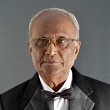Pronote
 Naga
(Querist) 06 December 2013
This query is : Resolved
Naga
(Querist) 06 December 2013
This query is : Resolved
what are The main Issues Rise in court on Pronote case ( forger pronote with 9lakh single Note)
In this case Pronote , paintiff and defendant places are different( districts). and pronote excuted in Defendent place
in above case Juridiction
 prabhakar singh
(Expert) 06 December 2013
prabhakar singh
(Expert) 06 December 2013
Please do not repeat again and again.
You have been advised properly here before.
If you want to understand law then be it known to you that a promissory note is defined in The Negotiable Instruments Act 1881.The Act operates subject to the
provisions of Sections 31 and 32 of the Reserve Bank of India Act, 1934.Section 31 of the Reserve Bank of India Act provides that no person in India other than the Bank or as expressly authorised by this Act, the
Central Government shall draw, accept, make or issue any bill of exchange, hundi, promissory note or engagement for the payment of money payable to bearer on demand. This Section further provides that
no one except the RBI or the Central Government can make or issue a promissory note expressed to be payable or demand or after a certain time.
Section 32 of the Reserve Bank of India Act makes issue of such bills or notes punishable with fine which may extend to the amount of the instrument. The effect or the consequences of these provisions are:
1. A promissory note cannot be made payable to the bearer, no matter whether it is payable on demand or after a certain time.
2. A bill of exchange cannot be made payable to the bearer on demand though it can be made payable to the bearer after a certain time.
3. But a cheque {though a bill of exchange} payable to bearer or demand can be drawn on a person’s account with a banker.
Negotiable instrument means a promissory note, bill of exchange or cheque payable either to order or to bearer, whether the word “order” or “ bearer” appear on the instrument or not.
Sections 118 and 119 of the Negotiable Instrument Act lay down certain presumptions which the court presumes in regard to negotiable instruments. In other words these presumptions need not be proved as
they are presumed to exist in every negotiable instrument. Until the contrary is proved the following presumptions shall be made in case of
all negotiable instruments:
Consideration: It shall be presumed that every negotiable instrument was made drawn, accepted or endorsed for consideration. It is presumed that, consideration is present in every negotiable instrument until the contrary is presumed. The presumption of consideration however may be rebutted by proof that the instrument had been obtained
from, its lawful owner by means of fraud or undue influence.
Date: Where a negotiable instrument is dated, the
presumption is that it has been made or drawn on such date, unless the contrary is proved.
Time of acceptance: Unless the contrary is proved, every accepted bill of exchange is presumed to have been accepted within a reasonable time after its issue and before its maturity. This presumption
only applies when the acceptance is not dated; if the acceptance bears a date, it will prima facie be taken as evidence of the date on which it was made.
Time of transfer: Unless the contrary is presumed it shall be presumed that every transfer of a negotiable instrument was made before its maturity.
Order of endorsement: Until the contrary is proved it shall be presumed that the endorsements appearing upon a negotiable instrument were made in the order in which they appear thereon.
Stamp: Unless the contrary is proved, it shall be presumed that a lost promissory note, bill of exchange or cheque was duly stamped.
Holder in due course: Until the contrary is proved, it shall be presumed that the holder of a negotiable instrument is the holder in due course. Every holder of a negotiable instrument is presumed to have
paid consideration for it and to have taken it in good faith. But if the instrument was obtained from its lawful owner by means of an offence or fraud, the holder has to prove that he is a holder in duecourse.
Proof of protest: Section 119 lays down that in a suit upon an instrument which has been dishonoured, the court shall on proof of the protest, presume the fact of dishonour, unless and until such fact is
disproved.
SO IT IS DEFENDANT WHO WOULD PROVE ANY FORGERY ALLEGED.
AND THAT A DEFENDANT CAN BE SUED WHERE HE RESIDES OR CARRY ON BUSINESS OR WHERE THE INSTRUMENT WAS DRAWN.
 R.K Nanda
(Expert) 06 December 2013
R.K Nanda
(Expert) 06 December 2013
nothing to add more.
 Rajendra K Goyal
(Expert) 06 December 2013
Rajendra K Goyal
(Expert) 06 December 2013
Repeated query, adequately advised already:
http://www.lawyersclubindia.com/experts/Pronote-value-438686.asp#.UqGz_OKLq_I
http://www.lawyersclubindia.com/experts/Pronote-case-438681.asp#.UqG0MOKLq_I
 malipeddi jaggarao
(Expert) 07 December 2013
malipeddi jaggarao
(Expert) 07 December 2013
No room to make any comments after Mr.Singh's reply.
 Biswanath Roy
(Expert) 07 December 2013
Biswanath Roy
(Expert) 07 December 2013
Prabhakarji's elaborate advice is appreciable. I agree with him.
 Raj Kumar Makkad
(Expert) 09 December 2013
Raj Kumar Makkad
(Expert) 09 December 2013
No further reply against the repeated query though already attended.
 Naga
(Querist) 06 December 2013
This query is : Resolved
Naga
(Querist) 06 December 2013
This query is : Resolved
